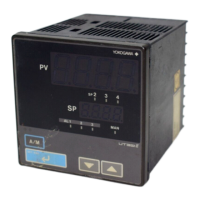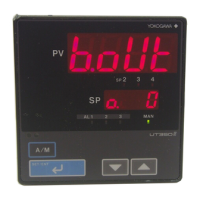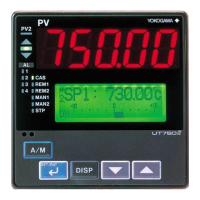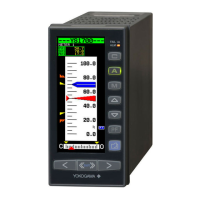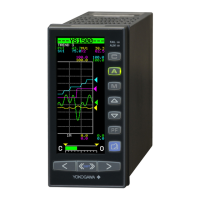<8. Detailed Description>
● Selecting a Suitable Language
The table below summarizes the characteristics of the FBD, LD and ST
programming languages.
Regulatory control
of analog signals
FBD ◎ △ ×
LD △ △ ×
ST × ◎ ◎
◎: Most suitable △: Suitable ×: Not suitable
When selecting a programming language for an application, besides the engineer’s
personal competency, consider and investigate the suitability of each language
before making a decision.
Selection of a language marked as “△: suitable” in the above table should be done
only after thorough investigation, while selection of a language marked as “×: not
suitable” is not recommended unless the application is very simple.
• Investigating “
: suitable”
In the example described later in Section 8.4.3, “Combining FBD, LD and ST,”
the part for finding PV values of the two NPAS_PVIs is programmed using FBD,
while the part for calculating their difference and turning on a signal according to
mode is programmed using ST.
The PV value difference involves a calculation, for which FBD, LD are indicated
as “△: suitable,” while ST is indicated as “ ◎: most suitable,” so programming
using any of the three languages should be fine. However, in this particular
example, the calculation is combined with a conditional, for which FBD and LD
are indicated as “ ×: Not suitable” so finally ST Is selected.
If the requirement specification contains only the PV value difference calculation,
then even programming using only FBD or LD, without combining with ST, would
not produce a complicated application.
• Investigating “×: Not suitable”
In the same example referred to above, the conditional is a compound
conditional involving both mode and difference. Using FBD or LD, which is
marked as “×: Not suitable” for conditional, to program this part would result in
complicated logic.
If the requirement specification is a simple comparison between the difference
and a preset value, however, a simple logic can still be created by placing a
comparison function (EQ, GT, GE, LT, LE).
Investigate the complexity of conditionals, if any, as described above, and if a
conditional is simple and can be created easily, using FBD or LD is fine.
For compound conditions, use ST, which is more suitable than FBD or LD for
programming conditionals.

